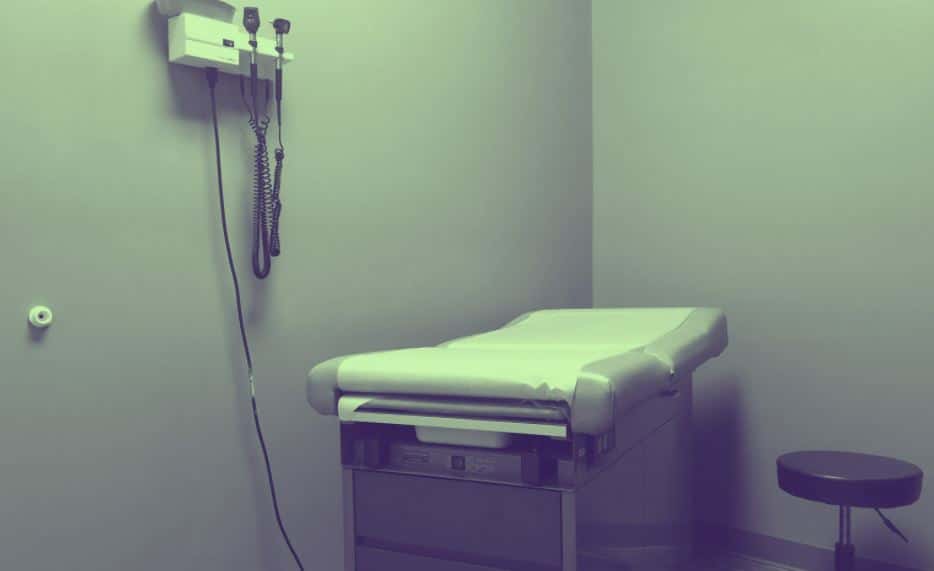Editors Note: This is a coauthored case report with one of our Audiology Doctoral Externs Jordan Hennessee. Jordan is a 4th year Doctor of Audiology Extern at Wake Forest Baptist Health. Her interests include working with people with intellectual and developmental disabilities, pediatric audiology, vestibular audiology, cochlear implants, and adult hearing diagnostics. Jordan is currently enrolled at Salus University’s Osborne College of Audiology. She also has received two bachelor’s degrees from the University of North Carolina, Chapel Hill, one in Biological Sciences and the other in American History.
 Benign Paroxysmal Positional Vertigo (BPPV) is generally accepted to be the most common peripheral vestibular disorder. Most cases of BPPV can be easily treated with canalith repositioning procedures, which involve a series of timed head movements designed to migrate the otoconia out of the affected semicircular canal. The most widely used canalith-repositioning maneuver is called the Epley maneuver. For those unfamiliar with the condition of BPPV or repositioning maneuvers please refer to my recent blog on Atypical BPPV.
Benign Paroxysmal Positional Vertigo (BPPV) is generally accepted to be the most common peripheral vestibular disorder. Most cases of BPPV can be easily treated with canalith repositioning procedures, which involve a series of timed head movements designed to migrate the otoconia out of the affected semicircular canal. The most widely used canalith-repositioning maneuver is called the Epley maneuver. For those unfamiliar with the condition of BPPV or repositioning maneuvers please refer to my recent blog on Atypical BPPV.
BPPV affecting the posterior canal is the most common accounting for 85-95% of cases. The Epley maneuver is designed to treat posterior canal BPPV. This maneuver requires the patient to turn their head 45 degrees toward the affected side while seated on a bed or exam table (position 1). The patient is the reclined supine with their head turned 45 degrees toward the affected ear and with the head tilted backward (position 2). After a period of 30 seconds the head is turned away from the affected ear toward the opposite shoulder with the head still tilted backward (position 3). The patient then rolls onto their side, away from the affected ear, with their nose pointed downward toward the floor (position 4). The patient is then brought upright to a seated position (position 5).

While the Epley maneuver is very effective in resolving posterior semicircular canal BPPV, some of these positions may be difficult for certain patients that have physical limitations. For example, we recently had a patient that received an arthroscopic rotator cuff repair on their left shoulder. They are an established patient in our clinic last seen in January of 2021 with test results and the report of symptoms most consistent with idiopathic right posterior canal BPPV with negative examination. They were treated successfully using at home Epley maneuvers with complete symptom resolution.
Recently, they experienced a recurrence of BPPV. Their symptoms were once again most consistent with right posterior canal BPPV based on the provoking head movements. They were unable to complete position 4 of the Epley maneuver due to the recent shoulder surgery. Correct head position in position 4 is of the utmost importance because this is where the otoconia should be exiting the posterior semicircular canal and re-entering the vestibule.
Other canalith repositioning procedures such as the Foster/Half Somersault maneuver have been described which do not require the patient to lie on their side. A full description of this maneuver with video instructions can be found here. We had the patient complete home Foster maneuvers as well as assisted in completing 2 of these maneuvers in the clinic to no avail and the BPPV persisted. We felt this maneuver was ineffective for this patient due to the inability to obtain enough head tilt backward in position 1 of the Foster maneuver.
Vertigo Treatment: A Modified Epley Maneuver
To treat this patient, we completed position 1, 2 and 3 of the Epley maneuver as described above. In position 3 we turned the patients head as far toward the left shoulder as possible. Instead of going in to position 4, rolling the patient on their left side, we quickly sat the patient upright and had them point their nose downward, looking down into their lap. We essentially made position five include an extreme head tilt forward and skipped position 4 altogether.
We waited 10 minutes and then completed a repeat right Dix Hallpike without significant nystagmus or symptoms. This patient has also not returned to our clinic with any remaining symptoms.
Below is a demonstration of the modification with the otoconia movements in red:
The aim of this slight modification of the Epley maneuver was to migrate the otoconia from the ampulla end of the posterior canal toward the most superior portion of the posterior semicircular canal toward the common crus in positions 2 and 3. The goal of the final position, sitting the patient upright with their nose pointed downward toward their lap was to migrate the otoconia the remainder of the way out of the common crus and back into the vestibule.
We propose this as a reasonable modification that can be made to the Epley maneuver in some patients that may have mobility issues and are unable to roll over onto their side or shoulder easily.
For this modification to be affective one must have reasonable neck range of motion to ensure appropriate head positioning in all test positions. This is a single case report, and these findings would need to be replicated to determine how effective this modified Epley maneuver is at resolving BPPV.
This modification is not being suggested to be used instead of the traditional Epley maneuver, but is rather being posed as a potential modification that can be made to the Epley maneuver in certain cases if needed.
*Images courtesy of Clinical Practice Guidelines BPPV and aVOR phone application










